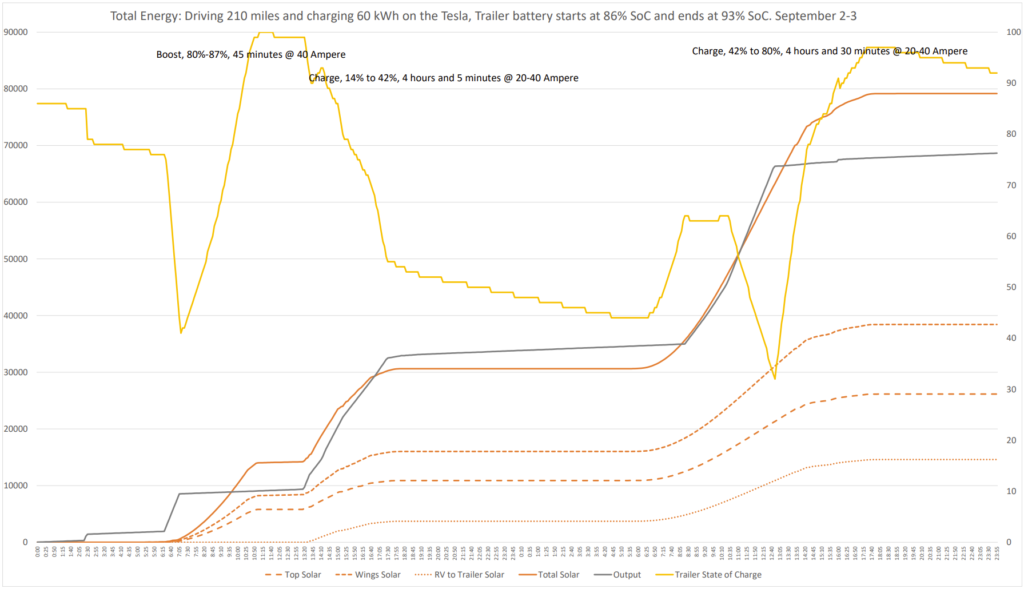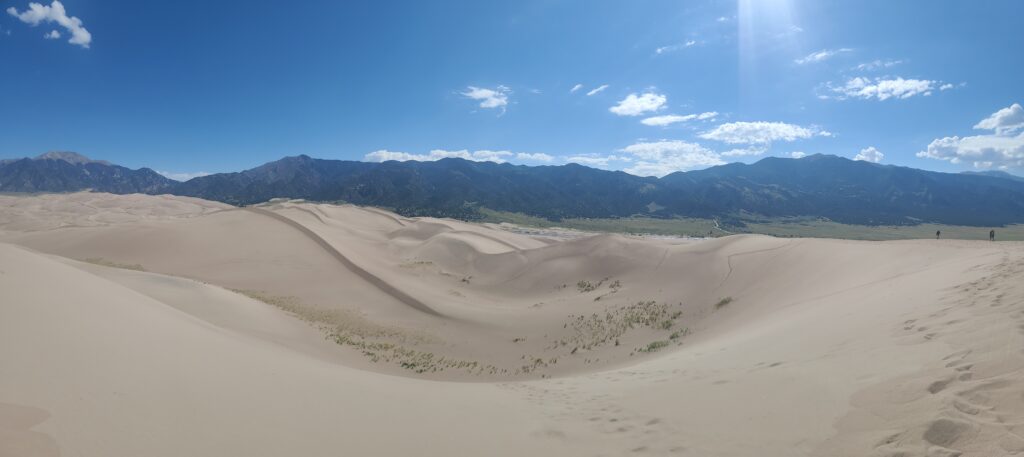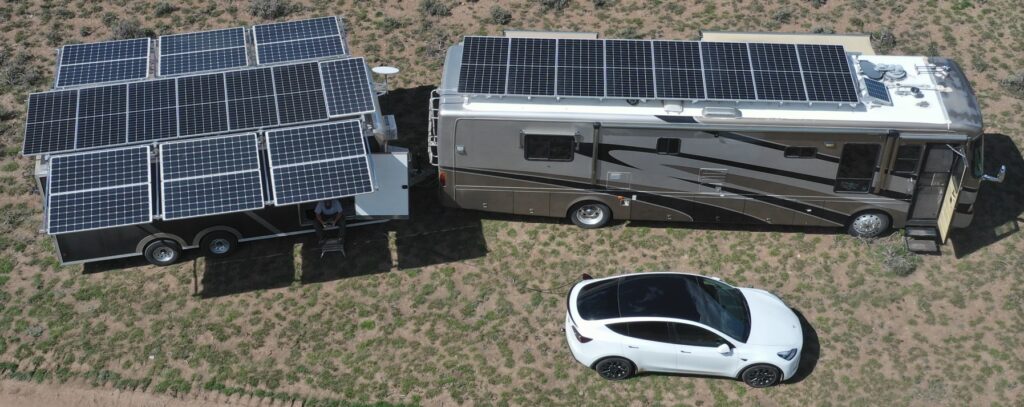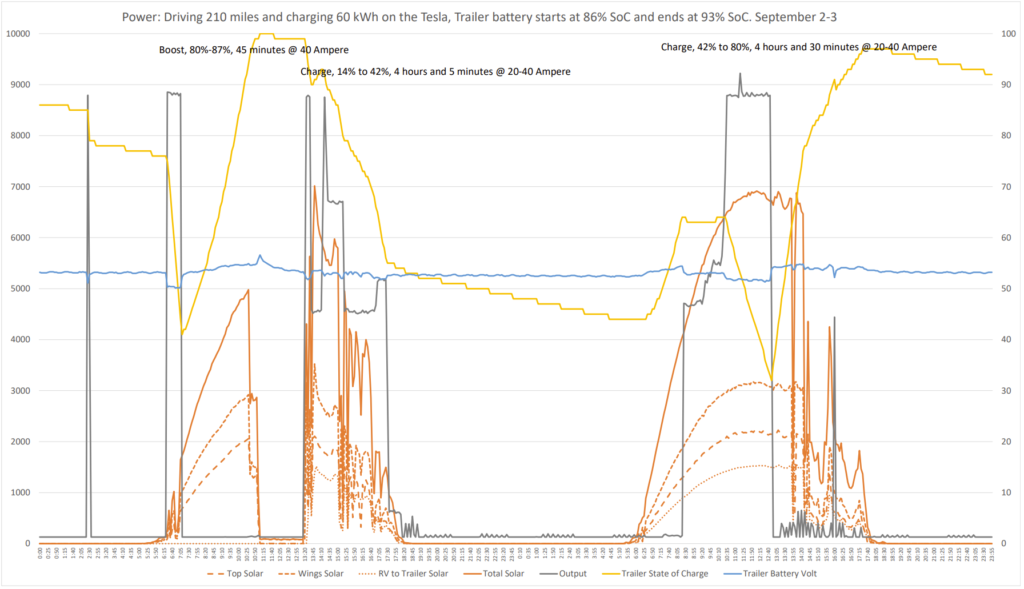On September 2nd was I going to hike in the Great Sand Dunes in Colorado. Getting to the highest point 700 feet above the parking area was good exercise.
We stayed more than 100 Miles away and I had no charging between me and the National Park. Luckily I could use our "Home Charger".
The Tesla was already at 80% State of Charge, but by adding a little extra charge in the morning before leaving could I not worry about the speed I was driving. The charge before leaving ended being 87%. After leaving was the battery bank in trailer also charged back to full around noon by the sun.
Returning with 14% State of Charge was the Tesla plugged in and it ended up using half of the battery in the trailer and the remaining sun to get to 42%. Next morning when the sun started to generate power was the charging continued, the Tesla made it to 80% around 1 PM or 31 hours after the initial boost charging started. At the end of the day was the battery bank in the trailer also fully charged.
Looking at the energy generated is also interesting showing how the sun over the day adding power and comparing to the output show the loses in the system. The sun generated 79 kWh from our chargers and we had 68 kWh output to useful loads including inverter loses. The inverter loses are around 6 kWh for the 48 hours. That is 62 kWh / 79 kWh for a 78% efficiency from sun to load.
 After this road trip is it very clear that days with good weather can provide enough energy for all the driving we need. The interesting part is when winter comes with short days and low sun. Maybe we can only do a road trip like this once a week.
After this road trip is it very clear that days with good weather can provide enough energy for all the driving we need. The interesting part is when winter comes with short days and low sun. Maybe we can only do a road trip like this once a week.


